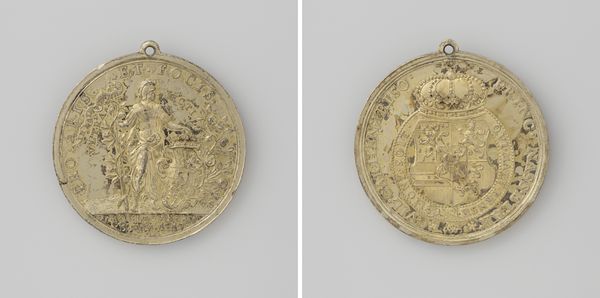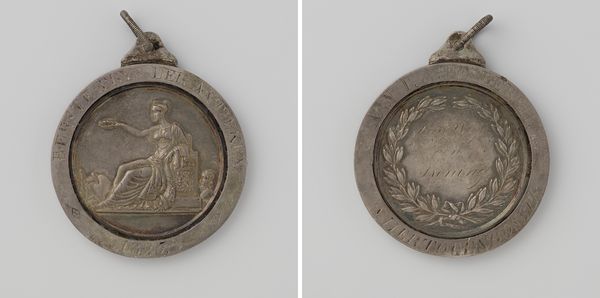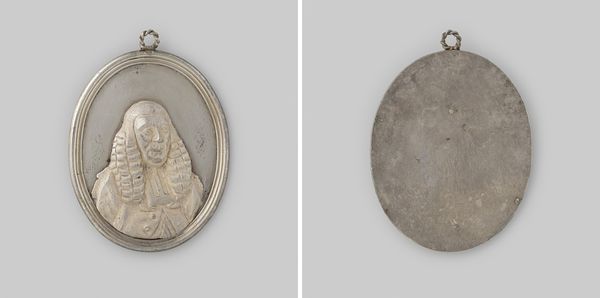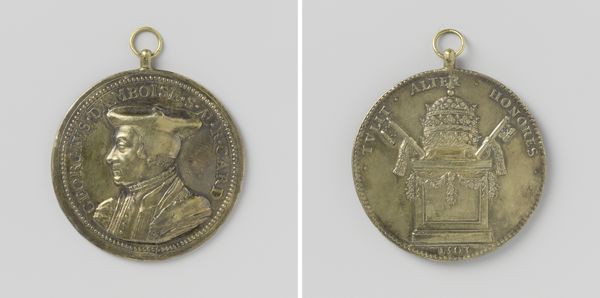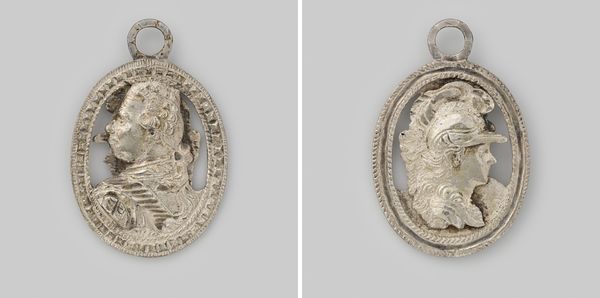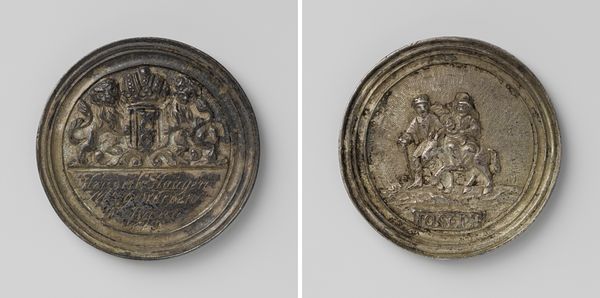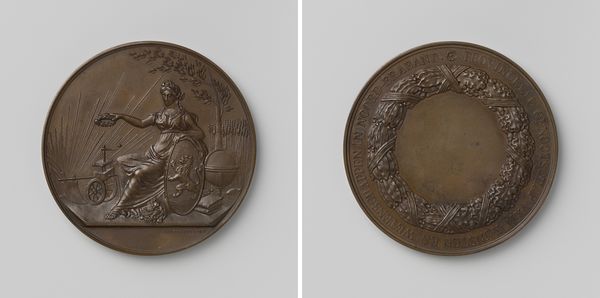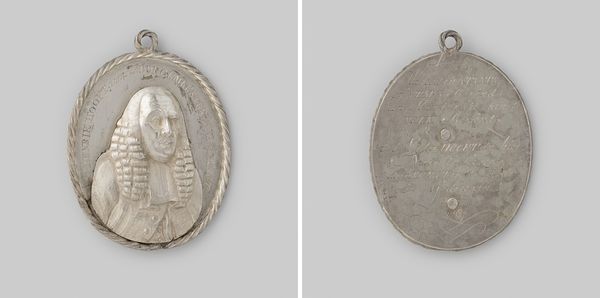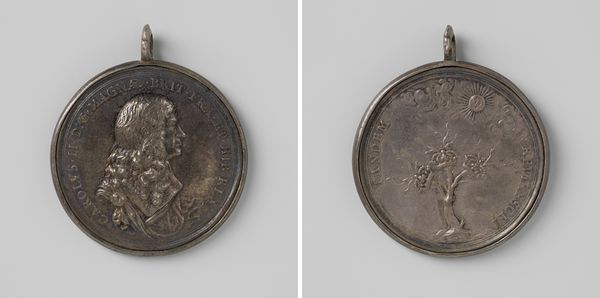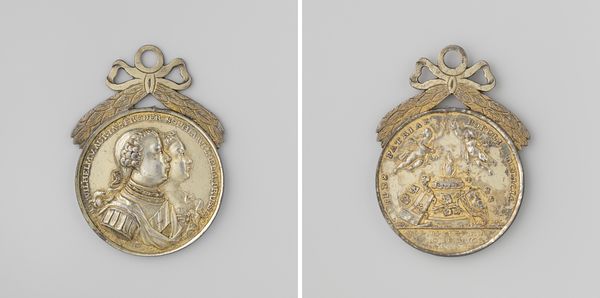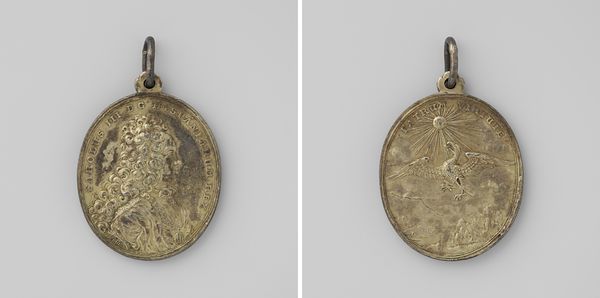
Vijftigjarige herdenking van Nederlands onafhankelijkheid en de Slag bij Waterloo 1865 1865
0:00
0:00
Dimensions: width 4.0 , height 4.4 , weight gr
Copyright: Rijks Museum: Open Domain
Curator: It feels like peering into a sliver of history. The detail is so fine, almost delicate. It evokes a sense of reverence, but perhaps also some loss, judging by the condition. Editor: Indeed. This commemorative medal from 1865 by Salomon de Vries celebrates the fiftieth anniversary of Dutch independence and the Battle of Waterloo. The relief is crafted in metal and showcases a distinct neoclassical style. Curator: Neoclassical, yes, in its striving for order. I notice the figures on the front. Is that supposed to be a depiction of Dutch liberation? I wonder about the choice to put that on what's fundamentally a medal about a military engagement? Editor: It's likely a deliberate commentary. One side portrays allegorical figures suggestive of liberty and nationhood, whilst the reverse shows a heraldic lion atop a pedestal. Both motifs clearly aim to cement the idea of Dutch strength and identity following their long-fought struggle. These sorts of state-sponsored objects reinforced these sentiments in the population, linking the military and monarchy. Curator: Ah, the lion. A loaded symbol, of course, appearing on crests, flags, everything! It's placed very prominently. It speaks volumes of national pride, and the importance the victors placed on defining this moment in Dutch collective consciousness. Editor: Precisely. What interests me is how this medal acted as a form of public art, a wearable statement accessible across social classes, instilling the principles of nationhood and historical awareness into everyday life. Medals like these became vital elements in the evolving rituals and imagery surrounding national identity. Curator: Thinking about the cultural weight these images carried, how Waterloo became synonymous with Dutch perseverance... You start to understand the emotional power behind seemingly simple designs. It becomes an accessible tool for projecting the desired values on the people. Editor: Right. Medals condense intricate political, social, and psychological meaning into something easily replicated and disseminated. That potent blend continues to fascinate. Curator: Absolutely. It shifts how I perceive its artistry, recognizing its wider context and ongoing implications. Editor: Indeed, art acts both as witness to, and agent of, the shifting dynamics of history.
Comments
No comments
Be the first to comment and join the conversation on the ultimate creative platform.

